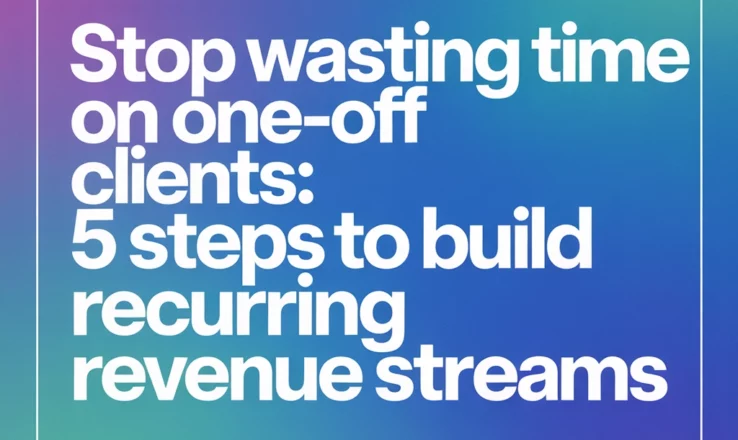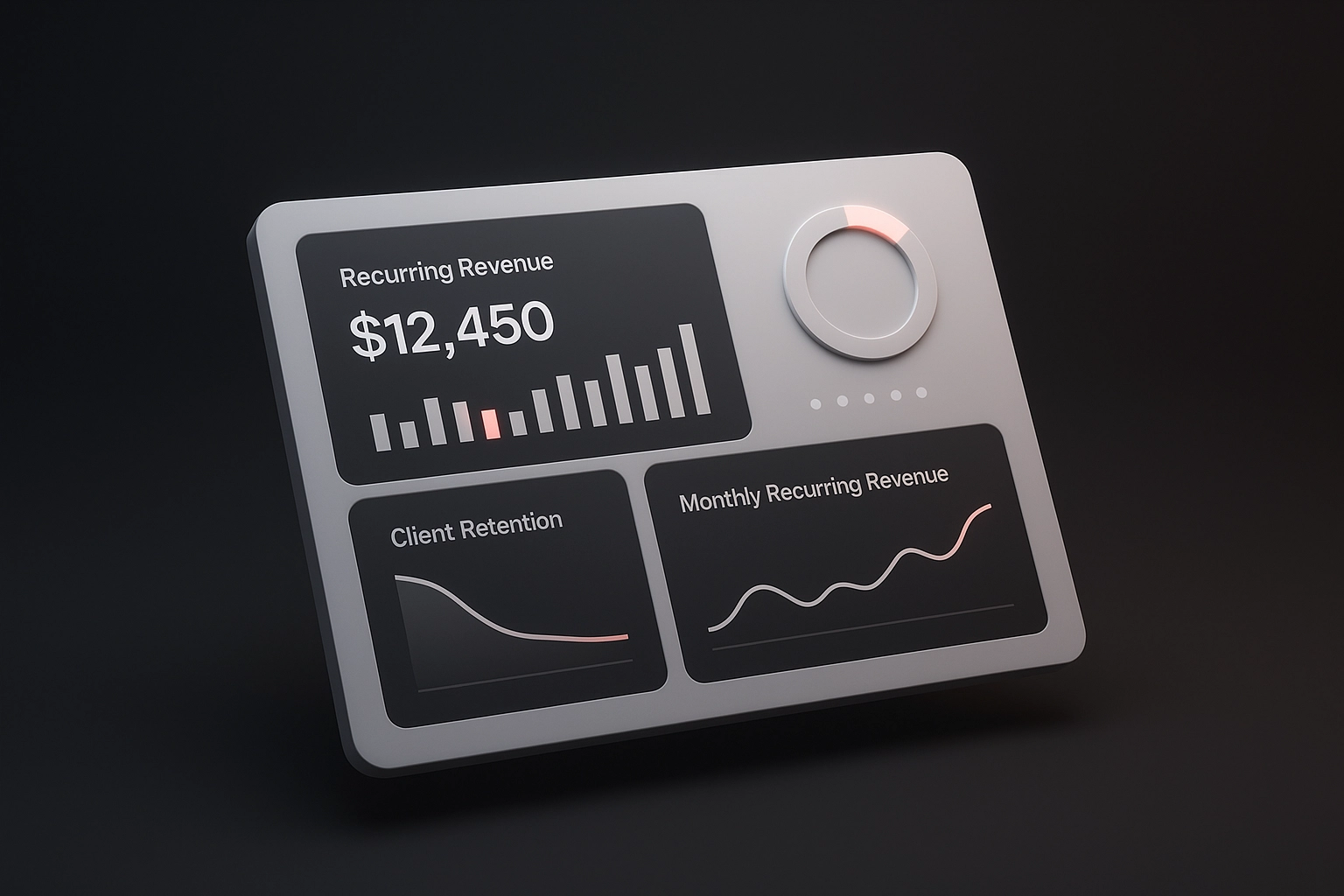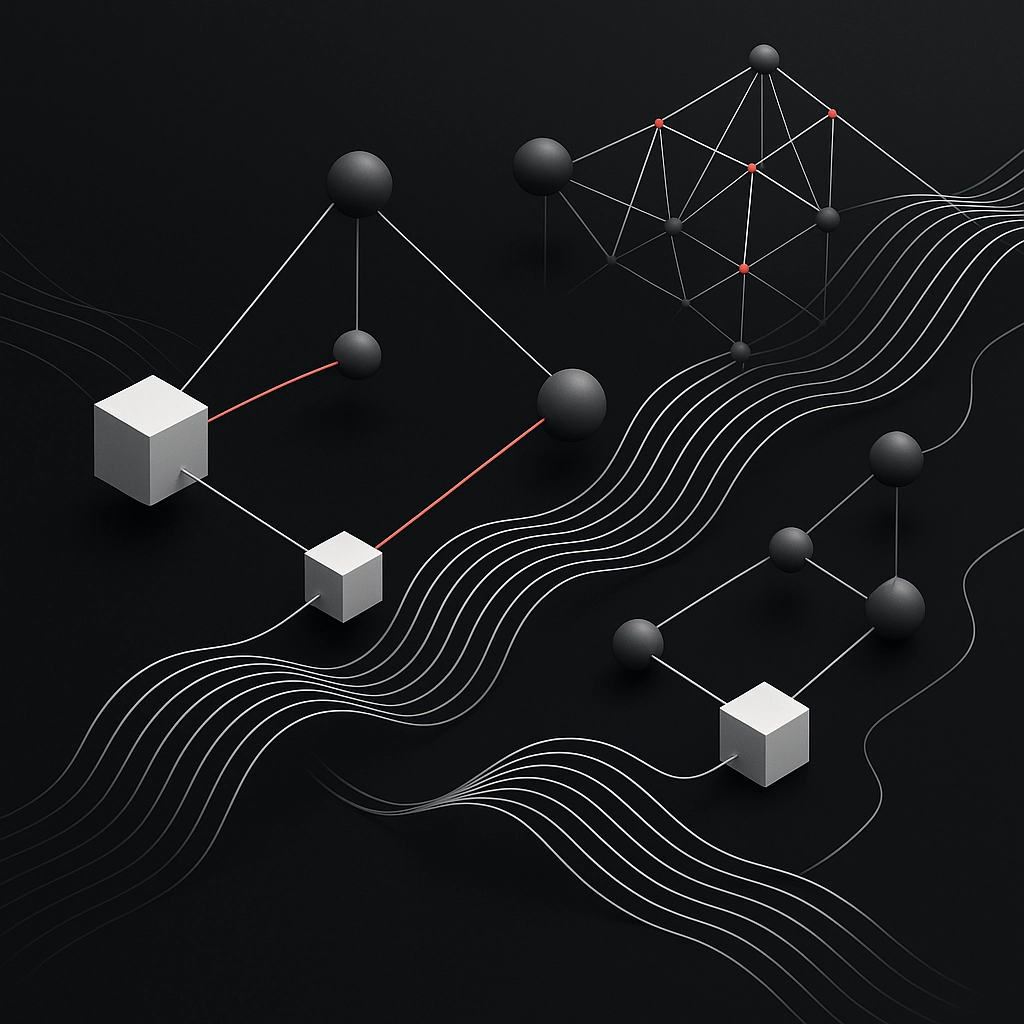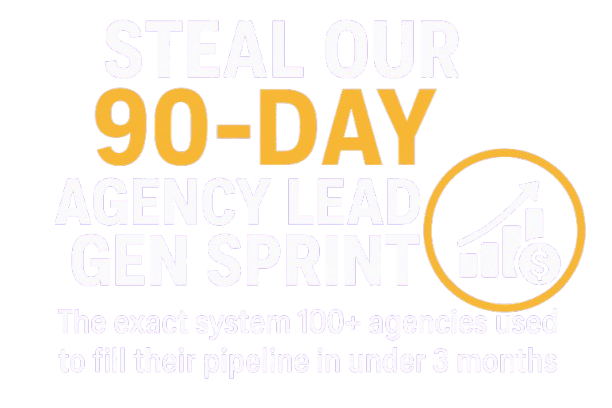
You're burning through cash flow like it's confetti at New Year's Eve. Every month, you're scrambling to replace the revenue from projects that just wrapped up. Your pipeline looks like a rollercoaster—massive peaks followed by terrifying valleys. This feast-or-famine cycle isn't just exhausting; it's completely avoidable.
The solution isn't working harder to find more one-off clients. The solution is transforming your existing client relationships into predictable, recurring revenue streams that compound month after month. Here's exactly how to do it.
Step 1: Audit Your Current Client Portfolio and Identify Recurring Opportunities
Start by pulling every client file from the past 24 months. Create a spreadsheet with columns for client name, project type, total project value, project duration, and current status. Now add three critical columns: Ongoing Need Assessment, Recurring Service Potential, and Monthly Retainer Value.
Go through each client systematically. Ask yourself: What ongoing challenges does this client face that we could solve monthly? What maintenance, optimization, or strategic work naturally follows our completed projects?
For SEO clients, this might be ongoing content creation, technical audits, and performance monitoring. For web development clients, consider hosting management, security updates, performance optimization, and feature enhancements. For marketing strategy clients, think monthly campaign optimization, reporting, and strategic pivots.
Here's what you're looking for specifically:
- Clients who repeatedly come back for similar work every few months
- Industries where compliance, security, or performance requires ongoing attention
- Businesses experiencing rapid growth who need scaled support
- Companies where your work directly impacts their revenue metrics
Document the specific pain points each client experiences between projects. These gaps represent your recurring revenue opportunities.

Step 2: Design Retainer Packages That Clients Can't Refuse
Now comes the strategic heavy lifting. You're going to create three-tier retainer packages for each service vertical you offer. This isn't about randomly packaging services—it's about creating compelling value propositions that solve ongoing client problems better than project-based work.
Design your Essential tier to cover the bare minimum ongoing needs. This should be priced at 30-40% of what a client typically spends with you quarterly on project work. Include basic monitoring, monthly check-ins, and priority support.
Build your Professional tier at 60-70% of quarterly project spend. Add strategic recommendations, expanded scope of work, and faster turnaround times. This becomes your sweet spot for most client relationships.
Create your Enterprise tier at 100-120% of quarterly spend. Include dedicated team members, custom reporting, and proactive strategic initiatives.
Critical framework for package design:
Start with the client's most urgent ongoing need, then layer in complementary services that create exponential value. For example, if you're doing ongoing SEO work, don't just include keyword monitoring and content creation. Add conversion rate optimization insights, competitor analysis, and strategic pivots based on performance data.
Price based on value delivered, not hours spent. If your ongoing SEO work generates an additional $10,000 in monthly revenue for a client, charging $2,000 per month for that service is completely justified.
Make the switch from project-based to retainer-based irresistible by offering grandfathered pricing for existing clients who commit to 12-month agreements. Offer a 15-20% discount on your retainer rates for current clients, but only for the first 90 days.
Step 3: Implement Strategic Upsells and Service Expansions
Your existing clients already trust you with their business. This trust is your competitive moat for expanding into additional service areas that generate recurring revenue.
Map the client journey systematically. After completing web development, what strategic need emerges? Usually, it's ongoing content creation, SEO optimization, and conversion improvements. After SEO implementation, clients need paid advertising management, email marketing automation, and social media strategy.
Identify these natural progression points and prepare compelling expansion proposals before your current project concludes.
Here's your expansion methodology:
Sixty days before project completion, schedule a strategic review meeting. Present performance data from your current work, then transition into discussing emerging challenges that will arise post-launch. Position your expanded services as the logical next step for continued growth.
Create service bundles that increase client dependency on your expertise. Instead of offering standalone paid advertising management, bundle it with landing page optimization, email sequence creation, and conversion tracking. This makes it significantly harder for clients to replace you with another provider.
Develop proprietary tools and dashboards that consolidate multiple services into a single interface. When clients log into your custom dashboard to view SEO performance, they should also see their advertising spend efficiency, content calendar, and conversion funnel metrics.
This creates switching costs that keep clients engaged long-term.

Step 4: Build Systems for Predictable Revenue Recognition
Transform your operations to support recurring revenue models. This means overhauling your project management, client communication, and service delivery systems.
Implement subscription billing infrastructure immediately. Use tools like Stripe Billing, Chargebee, or Recurly to automate recurring payments. Set up automatic invoice generation, payment retry logic, and dunning management for failed payments.
Create standardized service delivery calendars for each retainer package. Clients need to know exactly what they're receiving each month and when. For example, SEO retainer clients receive technical audits in week one, content calendar in week two, performance reports in week three, and strategy adjustments in week four.
Develop client success metrics and reporting systems that demonstrate ongoing value. Create monthly dashboards showing key performance indicators, improvements from your work, and strategic recommendations for the following month.
Here's your client success framework:
Every client should receive a standardized monthly report showing three key metrics: performance improvements attributable to your work, strategic recommendations for continued growth, and upcoming initiatives planned for the following month.
This reporting serves two purposes: it justifies ongoing investment in your services and creates opportunities to expand into additional service areas.
Set up automated check-in sequences that ensure no client feels neglected. Monthly strategy calls, quarterly business reviews, and annual planning sessions should be systematically scheduled for every retainer client.
Step 5: Create Long-term Client Success Programs
The final step transforms satisfied clients into long-term revenue streams that compound annually. This requires shifting from service provider to strategic partner.
Develop annual strategic planning processes where you help clients map their business objectives and align your services to support those goals. This positions your agency as integral to their success, not just a vendor providing services.
Create client advisory programs where your top retainer clients receive early access to new services, exclusive industry insights, and networking opportunities with other clients. This builds community around your agency and increases switching costs.
Implement graduated success programs where clients receive enhanced services and strategic access as they reach tenure milestones. Clients who maintain retainers for 12 months get priority support and strategic consulting. 24-month clients receive expanded services at no additional cost.
Build referral incentive programs specifically for retainer clients. Offer one month free service for every successful referral who signs a 12-month retainer agreement. This turns your best clients into active business development partners.
Here's your client retention methodology:
Track client health scores based on engagement levels, payment history, and strategic initiative participation. Clients with declining health scores receive proactive outreach to address concerns before they consider terminating services.
Create exclusive content and training programs for retainer clients. Monthly mastermind calls, quarterly industry trend briefings, and annual strategic planning workshops position your agency as an indispensable business resource.

Making the Transition Successfully
The shift from project-based to recurring revenue requires careful change management. Start by identifying your three best clients from the past year—the ones who consistently come back for additional work and value strategic guidance.
Present retainer options to these clients first. Use their success stories and feedback to refine your packages before approaching your broader client base.
Set aggressive but realistic goals. Target converting 60% of your active clients to some form of recurring revenue arrangement within 180 days. This typically requires 45-60% of your current revenue to come from retainer agreements to achieve true recurring revenue stability.
Track the right metrics ruthlessly. Monthly Recurring Revenue (MRR), client lifetime value, churn rate, and average revenue per client should become your primary business indicators instead of project completion rates and new client acquisition numbers.
Your agency's valuation multiplies exponentially when buyers see predictable recurring revenue streams instead of volatile project-based income. This transformation isn't just about improving cash flow—it's about building a sellable business asset that generates wealth long-term.
The feast-or-famine cycle ends when you stop chasing one-off projects and start building recurring revenue relationships. Every client conversation should now include discussion of ongoing needs and long-term strategic partnership opportunities.
Time to stop working harder and start working more strategically. Your cash flow stability and business valuation depend on making this transition successfully.
